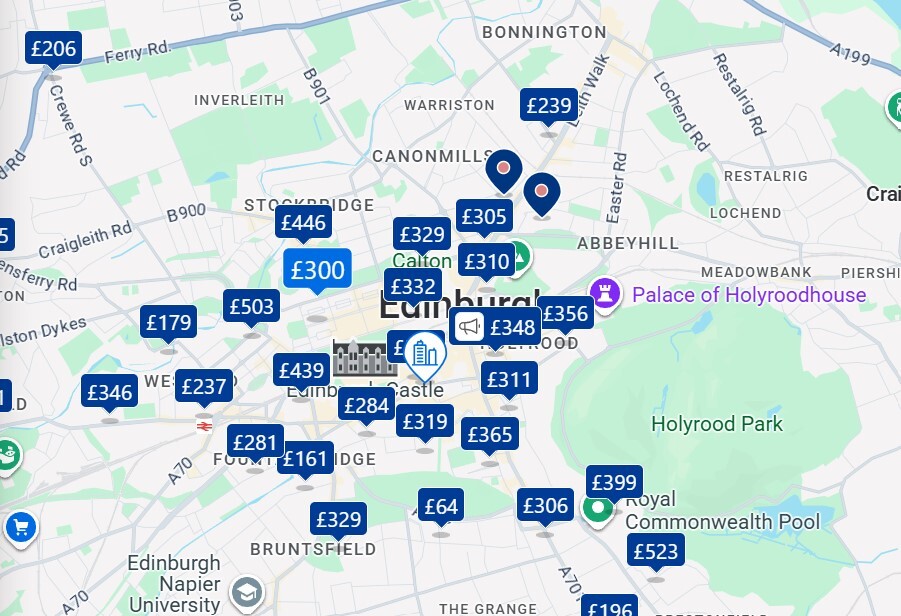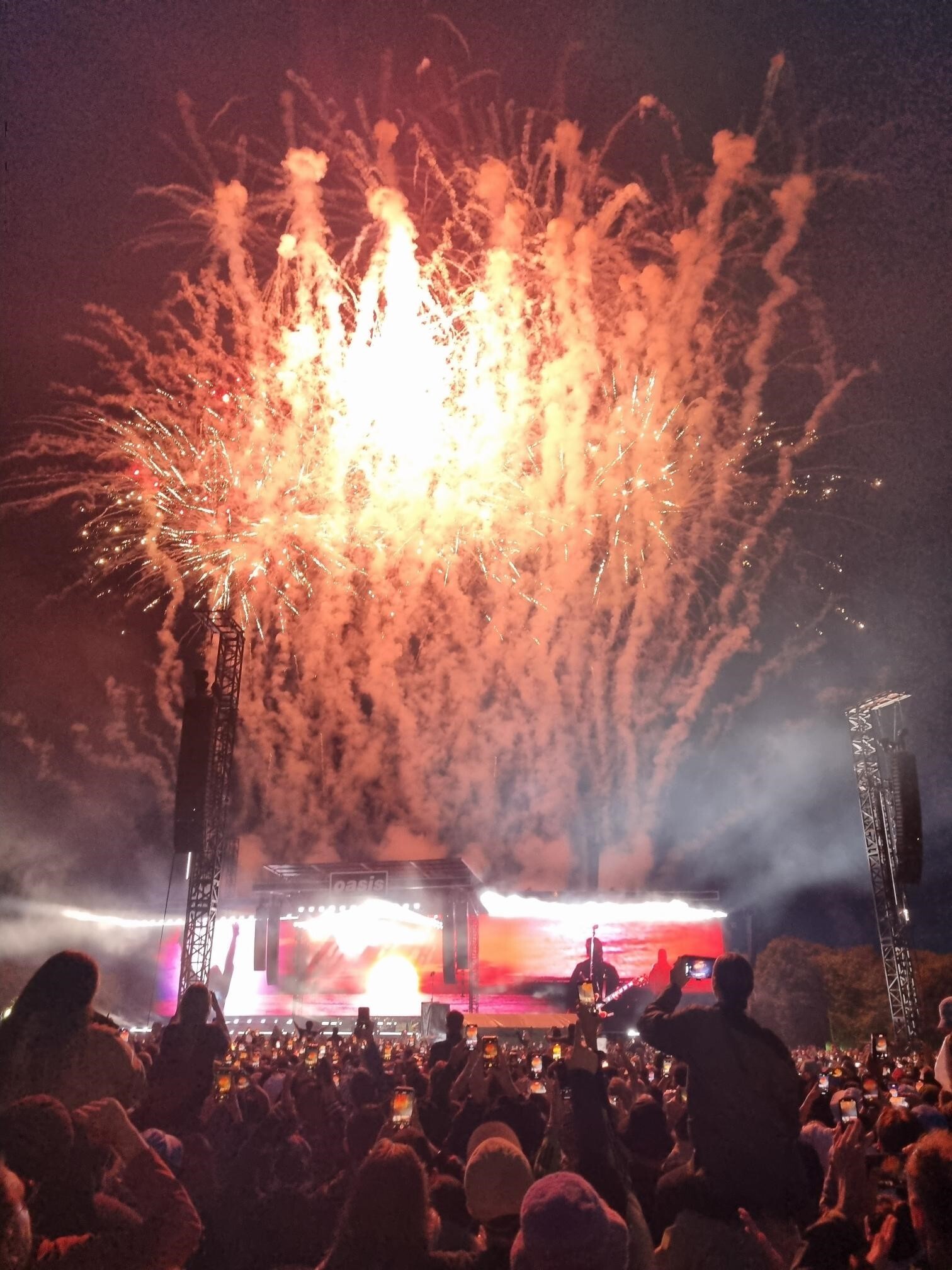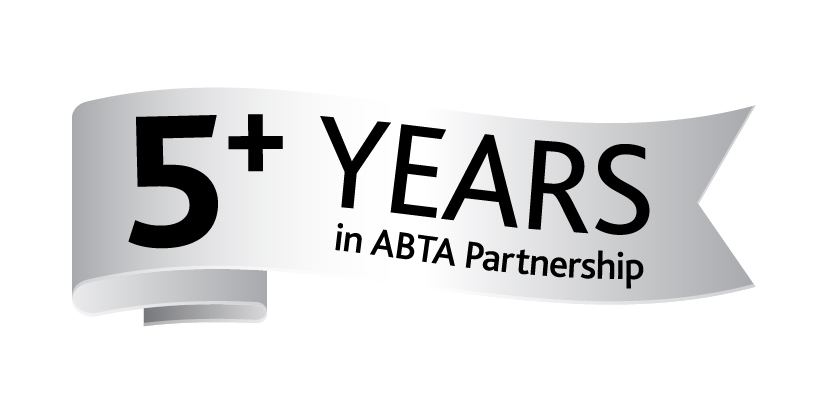I was 14 when Oasis swaggered into the mainstream. Truth be told, my tastes leant more towards Blur than Oasis, but I still played those first two albums to death (wait, there were more Oasis albums after that??). I even had a couple of Liam posters torn carefully from Smash Hits pinned to my bedroom wall, although they were steadily losing ground to Damon Albarn in the fight for premium teenage wall space.
When news of an Oasis reunion broke in August last year, I didn’t exactly scramble for tickets. Having heard Liam sing in recent years, the words ‘cat’ and ‘strangled’ came to mind.
Turns out I was in the minority. A lot of people really, really, REALLY wanted to see the Gallagher brothers, with tickets selling out in hours. Great news for ticket vendors and their ‘dynamic ticketing’ (ugh). But also, great news for the local economies of the tour’s host cities.
Last year, we wrote about the ‘Taylor Swift effect’ (i.e. the huge economic impact wherever she tours) and how her Paris shows attracted more than five times as many luxury American visitors as the Olympics had expected. With Oasis, it’s less about international tourists and more about domestic travel – Brits dusting off their bucket hats and flocking to London, Manchester, Cardiff and Edinburgh for a shared moment in music history.
Some might say… it’s a win for local economies
Recent figures suggest the band’s Live ’25 tour has already generated £940m overall to the British economy, including £217 million from ticket sales and £219.3 million from hospitality. That figure is predicted to rise to over £1 billion before September, when the domestic leg of the tour comes to an end. According to Barclays, fans are spending an average of £766 each – covering tickets, accommodation, £75 on food and drink, £60 on merchandise, plus travel and new outfits.
In April, the Manchester Evening News reported that the forthcoming Oasis gigs sparked a hotel ‘desert’ with 90 per cent fully booked on gig days. Prices were hiked to such an extent that the cheapest hotel rooms remaining across the entire city was £234 – and that was for a windowless room which on a mid-week night can typically be booked for as little as £39. Hard to stop crying your heart out at those prices.
It's not just hoteliers laughing all the way to the bank. Elsewhere in Manchester, bookings for 'Wonderwalks’, an exclusive Oasis-themed walking tour of Manchester, were up by 75 per cent compared to last year, while demand for a three-hour Oasis bus tour of the city has risen by 50 per cent. The tour – £40 for an adult, £30 for a child – takes in sites such as Liam and Noel Gallagher’s old school, plus a drive-by of guitarist Paul ‘Bonehead’ Arthurs’s former house in which the cover sleeve of Definitely Maybe was photographed.
At time of writing, Oasis are currently preparing for three nights in Edinburgh, where the Scottish capital is expected to host up to 210,000 fans. With the Edinburgh Festival currently in full swing, and both Scottish and English school kids still on holiday, the city’s hotels, bars, restaurants and attractions are at peak demand.
To put this into perspective, take a look at the prices for one night’s stay at any of Edinburgh’s central hotels, according to Booking.com:

Now look at the prices for the same hotels a month later:

Still eye-wateringly pricey (that's Edinburgh for you), but considerably so than the month prior.
Total fan expenditure associated with the Oasis reunion tour, by concert city (£m, 2025)
Let’s take a look at the splits across the four host cities (data from Novuna):
- London: £426 million total spend, £109 million directly into the city’s economy
- Manchester: £277 million total, £96 million direct
- Edinburgh: £124 million total, £43 million direct
- Cardiff: £113 million total, £27 million direct
Adido’s own Kyle Bones attended one of the Manchester dates. Here’s the breakdown of how much he spent:
- Oasis tickets £150
- Train tickets - £110
- Hotel - £120 (with NHS discount)
- Food & Drink £100
Having seen the Gallagher brothers perform solo before, this was my first time seeing Oasis and it felt like a “go at any cost” moment. A big part of that was knowing it was their final show in Manchester. £500 all in? Pricey, yes. Worth it? Absolutely. A once-in-a-lifetime experience… except I’ll be doing it all over again in September. Roll on Wembley!

Why destination marketers should definitely maybe get in on the act
For destination marketers, tour announcements on this scale are an absolute golden goose. A major act announces dates and the clock starts ticking - searches spike, bookings rise, prices rocket. Those in the know get in early with packages, targeted campaigns and partnerships.
For those in travel, tourism and hospitality, these events offer the chance to sell more than just a ticket and a bed for the night. Think ‘gig-weekend’ itineraries, themed menus, late check-outs for post-concert lie-ins.
The Oasis tour is proof that nostalgia is a powerful economic driver - and a tour de force for domestic tourism. While the gigs themselves are typically just a couple of hours long, the spending they generate before and after can be transformative for local economies.
When it comes to future reunions from British icons, perhaps only a Morrissey/Marr or Spice Girls tour might come close in terms of hype. If either does occur, whichever cities play host to the gigs can expect a surge in visitors, packed venues and a sizeable boost to local businesses - proving once again that these reunions are about far more than just the music.
And, as for me, how do I feel about missing out on the tour of the decade?
Meh. I just have to roll with it.





